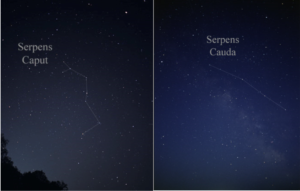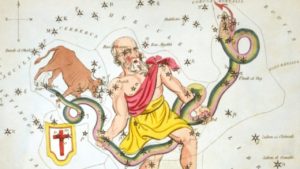Serpens, resembles the shape of a snake, when stars in this constellation are imaginarily connected, as per Hindu mythology. This constellation is divided into two parts Serpens caput (head) and Serpens cauda (tail)!
Where should I see…Bootes and Virgo, are towards west of Serpens caput constellation. If you move your eyes towards east, you will see other constellations named Hercules and Oppiuchus. In the North and South of Serpens caput, you will find Corona Borealis and Libra constellations respectively. Serpens caput is near to celestial equator towards North Pole, and so is part of Northern Hemisphere.
you will see other constellations named Hercules and Oppiuchus. In the North and South of Serpens caput, you will find Corona Borealis and Libra constellations respectively. Serpens caput is near to celestial equator towards North Pole, and so is part of Northern Hemisphere.
Ophiuchus, is the constellation which is towards west of Serpens cauda constellation. If you move your eyes towards east, you will see another constellation named Aquilla and Scutum. In the North and South of Serpens cauda, you will find Hercules and Sagittarius constellations respectively. Serpens cauda is near to celestial equator towards South Pole, and so is part of Southern Hemisphere.
When and What can I see…It covers up 637 square degree area of the sky. Area wise it is 23rd largest constellation in the sky.
We can gaze at this shape of Serpens constellation from February to September, as seen from India.
All you need is your naked eyes other than clear skies to see 113 stars of this constellations, as they are the one which are brighter than the lower limit of our naked eyes (i.e. 6.5 apparent magnitude) to see faintest stars.. The brightest star of this constellation is Alpha serpentis (Unukalhai).
Constellations are made up of single, binary (apparent and absolute), multiple and variable stars. Out of total 113 stars of different types, here is the list of 20 brightest stars as per their nature:
| Binary / Multiple Star system | Variable Stars |
Binary/multiple and Variable Stars | Single stars |
| Unukalhai | Gudja | Alya | 5 |
| 4 | 3 | 5 | |
| 5 | 4 | 6 | 5 |
Mythology stories…As per Hindi mythology, there are no such known stories for this constellation.
Deep Sky Objects…

Arp 220 || Ultra luminous Infrared Galaxy

Blinking Galaxy or NGC 6118 || Spiral Galaxy

Death Star Galaxy || Two galaxies rotating around each other
All the stars that we see naked eyes, all belong to our own, Milky way galaxy (Akash Ganga Tara Vishv). Bright stars can be seen naked eye and faint one through telescope. But the curtain of sky that we see in 2D is actually a huge universe we are talking about, with 3 dimension. There are many nebulous objects visible in every constellations. They differ widely by distances and nature. Like Emission Nebula, Reflecting Nebula, Absorption Nebula, Star Birth Nebula, Supernova Remnants (SNR) and Open Starscluster which are within the disk of our own Milky Way galaxy. Globular cluster are also found, which are in the halo of our galaxy and some most distant objects like galaxies are also visible through telescope. Such objects are defined as “Deep Sky Objects”.
In this constellation there are 1 such different types of Deep Sky Objects observed. Below is the 1 brightest Deep Sky Object:

M16 or Eagle Nebula || Open Cluster

Hoag’s Object || Ring Galaxy

M5 or NGC 5904 || Globular Cluster
| | Galaxy | Open Cluster | Globular Cluster | Nebula | Supernova Remnant | |
| Naked eye visibility | – | – | – | – | – | |
|
| Visible through Telescope | Seyfert’s sextet | – | – | – | – | |
|
|
| | 1 | – | – | – | – | |

NGC 5921 || Spiral Galaxy

NGC 6539 || Globular Cluster

NGC 5962 || Spiral Galaxy
 you will see other constellations named Hercules and Oppiuchus. In the North and South of Serpens caput, you will find Corona Borealis and Libra constellations respectively. Serpens caput is near to celestial equator towards North Pole, and so is part of Northern Hemisphere.
you will see other constellations named Hercules and Oppiuchus. In the North and South of Serpens caput, you will find Corona Borealis and Libra constellations respectively. Serpens caput is near to celestial equator towards North Pole, and so is part of Northern Hemisphere.

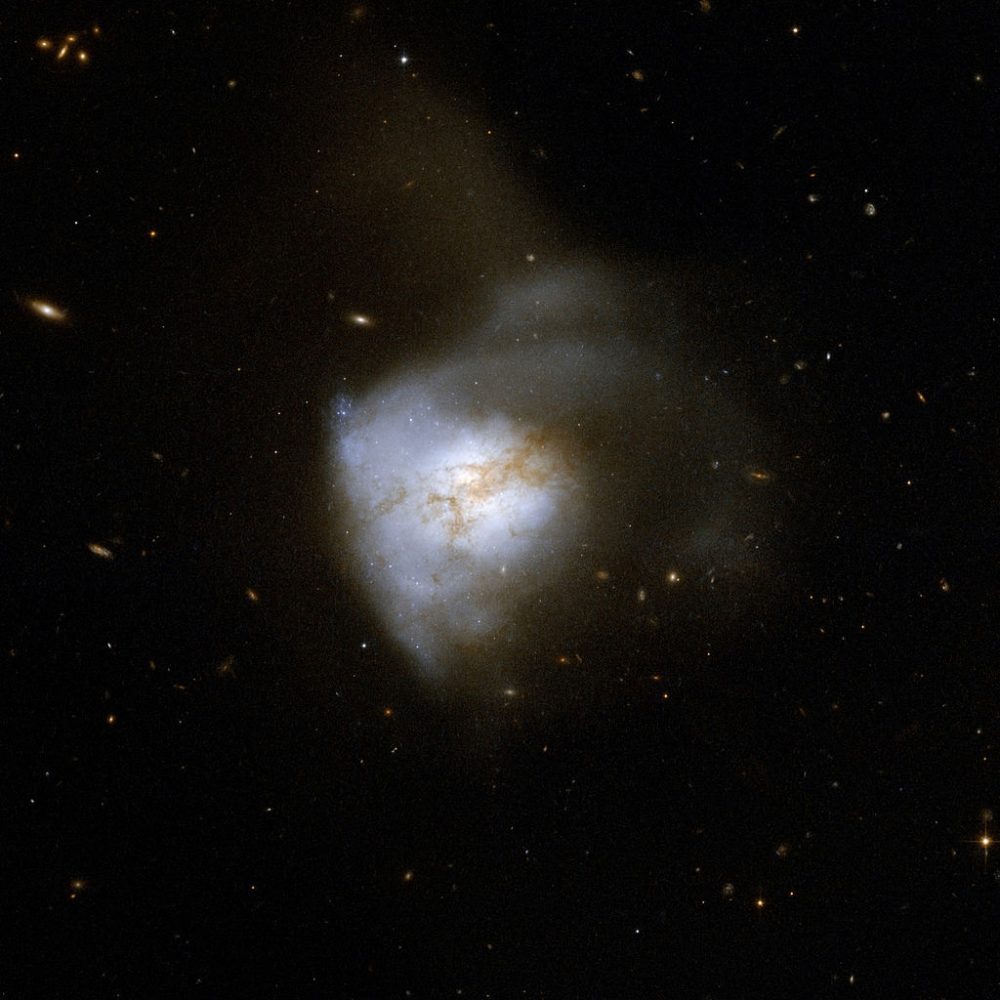 Arp 220 || Ultra luminous Infrared Galaxy
Arp 220 || Ultra luminous Infrared Galaxy
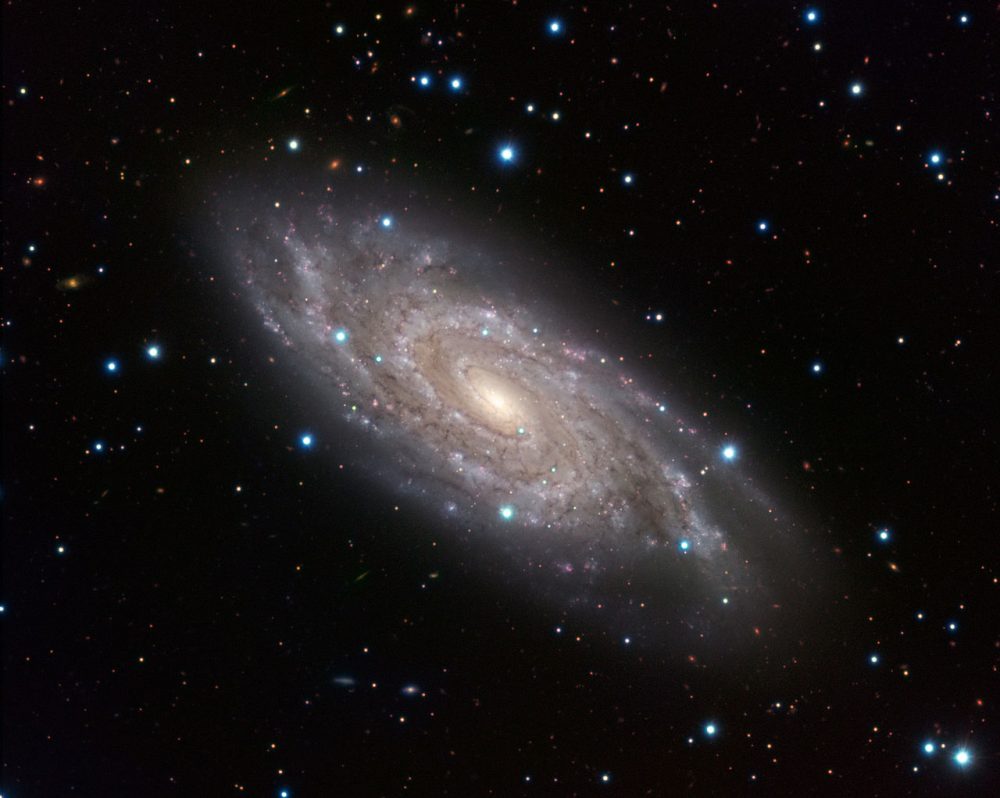 Blinking Galaxy or NGC 6118 || Spiral Galaxy
Blinking Galaxy or NGC 6118 || Spiral Galaxy
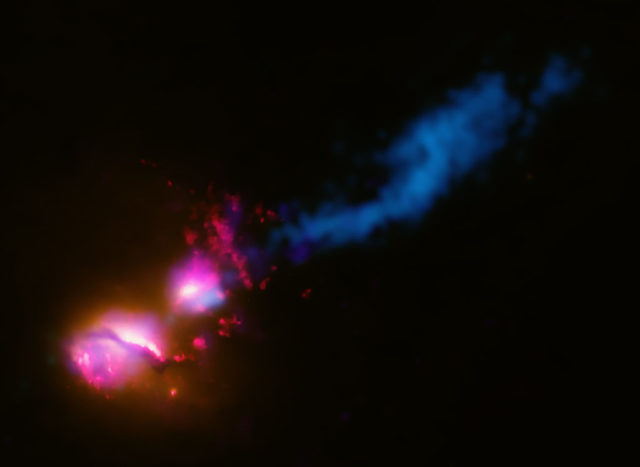 Death Star Galaxy || Two galaxies rotating around each other
Death Star Galaxy || Two galaxies rotating around each other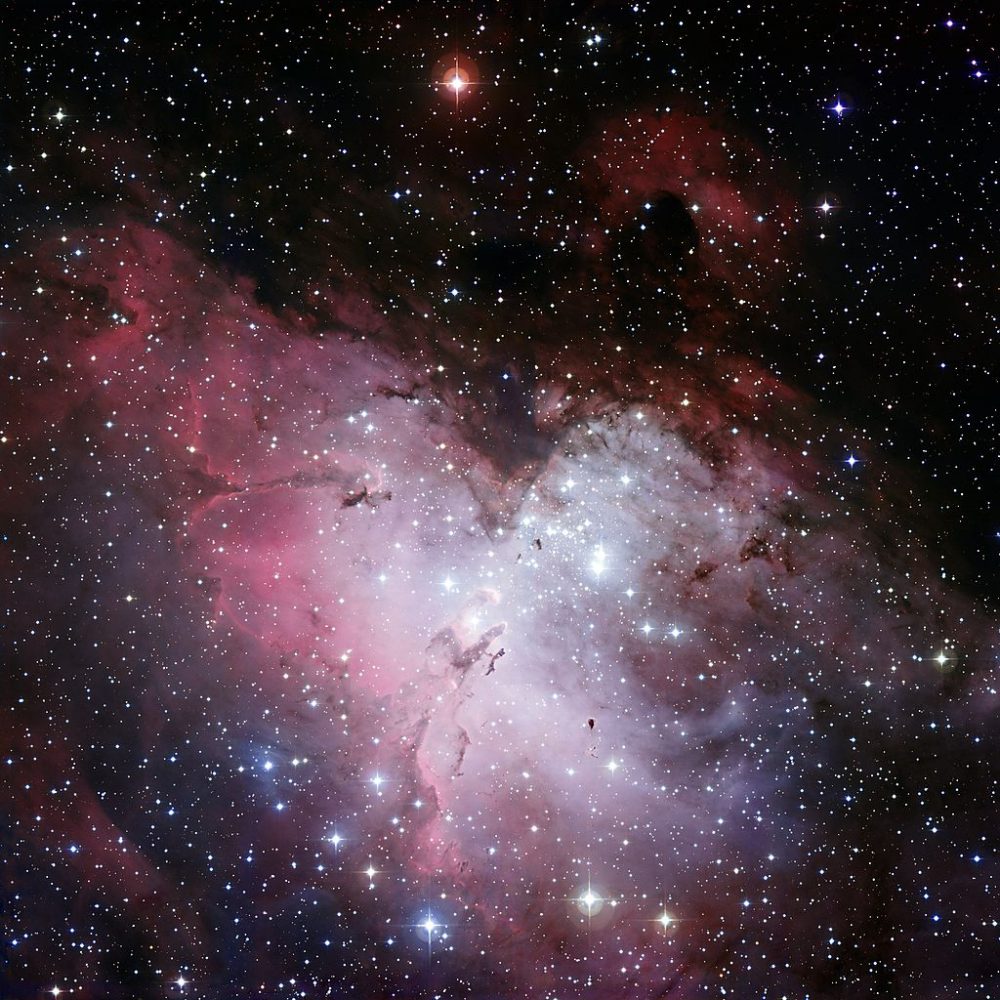 M16 or Eagle Nebula || Open Cluster
M16 or Eagle Nebula || Open Cluster
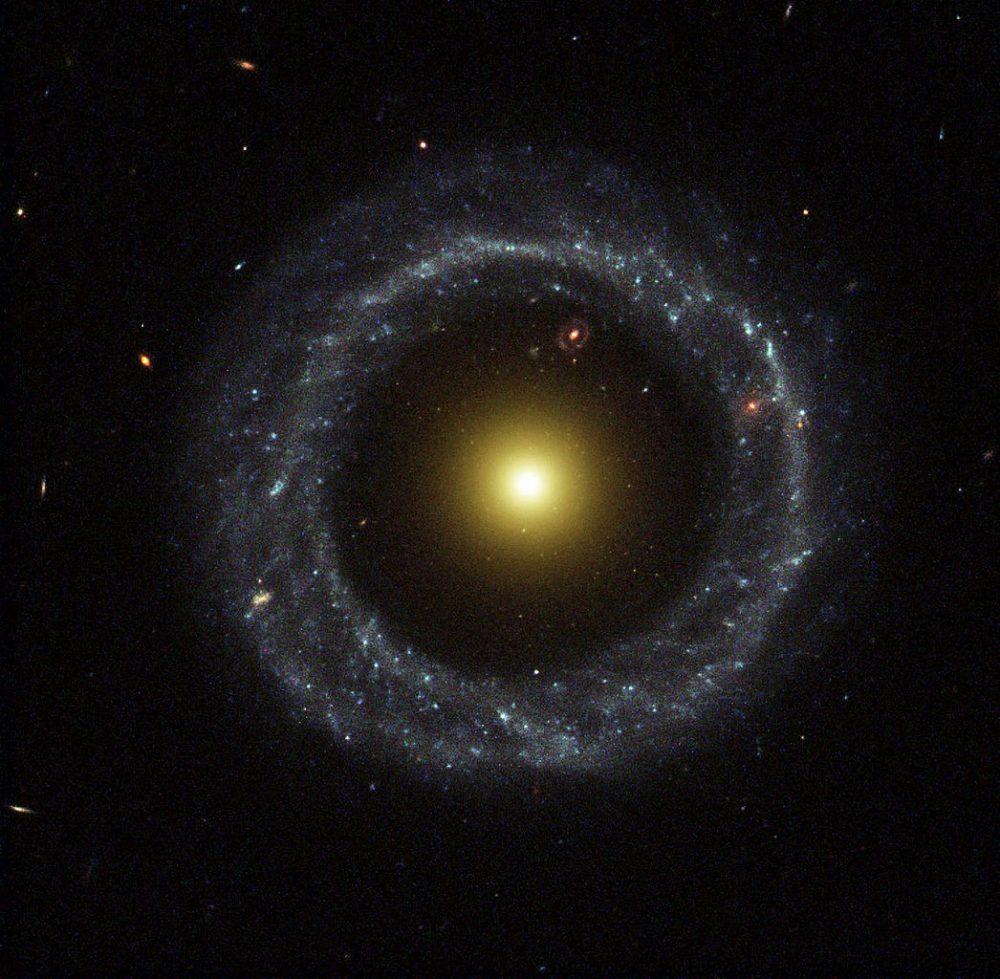 Hoag’s Object || Ring Galaxy
Hoag’s Object || Ring Galaxy
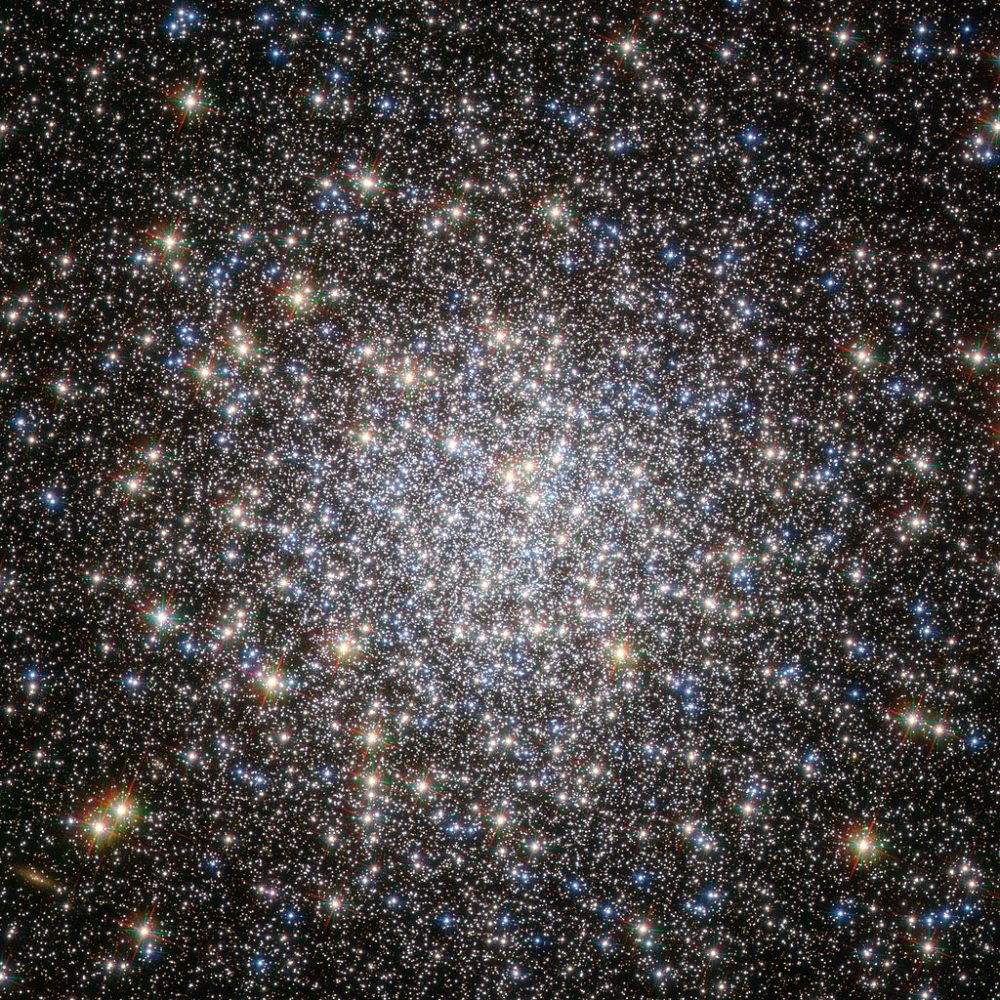 M5 or NGC 5904 || Globular Cluster
M5 or NGC 5904 || Globular Cluster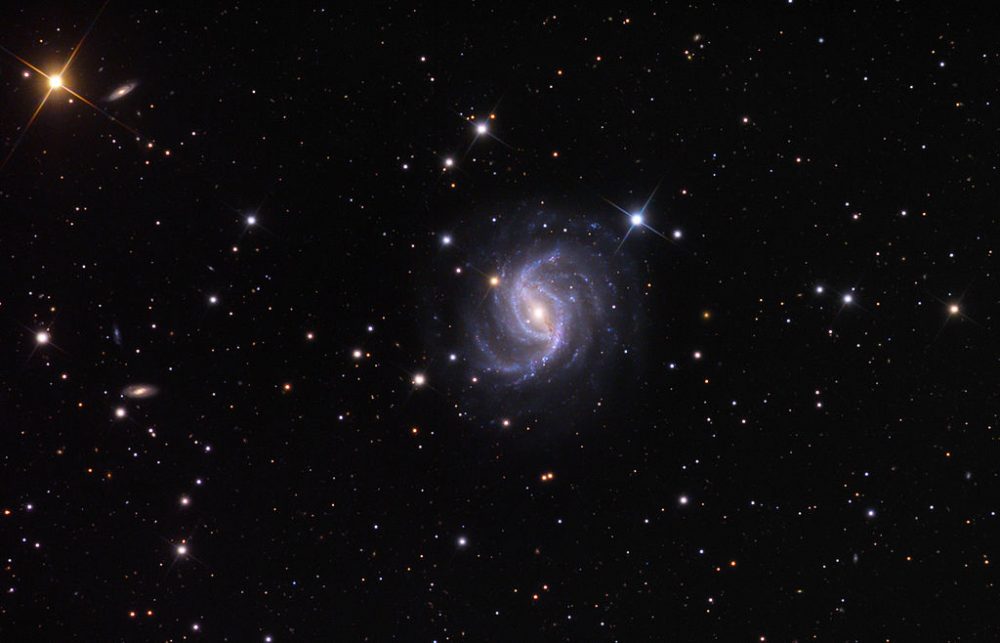 NGC 5921 || Spiral Galaxy
NGC 5921 || Spiral Galaxy
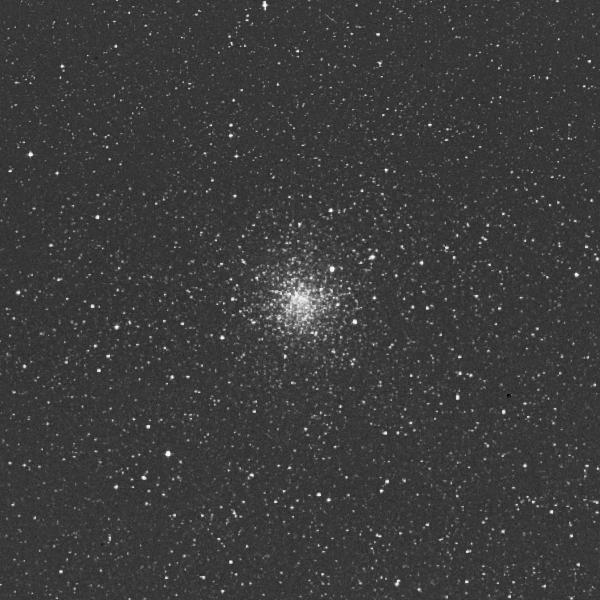 NGC 6539 || Globular Cluster
NGC 6539 || Globular Cluster
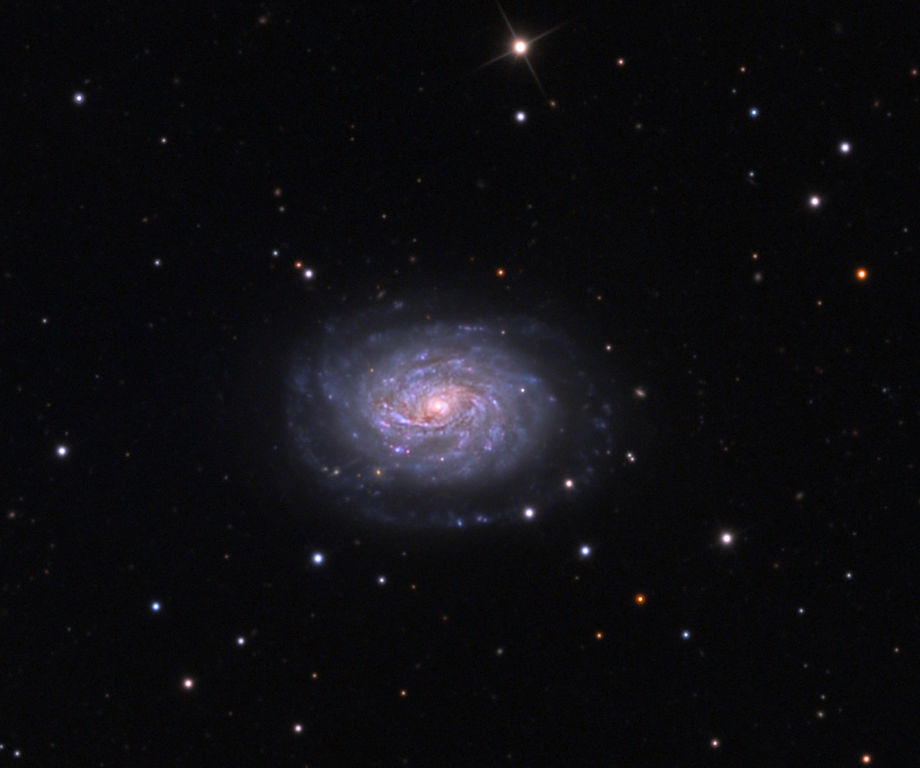 NGC 5962 || Spiral Galaxy
NGC 5962 || Spiral Galaxy


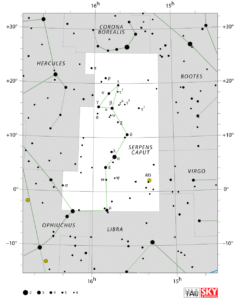 you will see other constellations named Hercules and Oppiuchus. In the North and South of Serpens caput, you will find Corona Borealis and Libra constellations respectively. Serpens caput is near to celestial equator towards North Pole, and so is part of Northern Hemisphere.
you will see other constellations named Hercules and Oppiuchus. In the North and South of Serpens caput, you will find Corona Borealis and Libra constellations respectively. Serpens caput is near to celestial equator towards North Pole, and so is part of Northern Hemisphere.